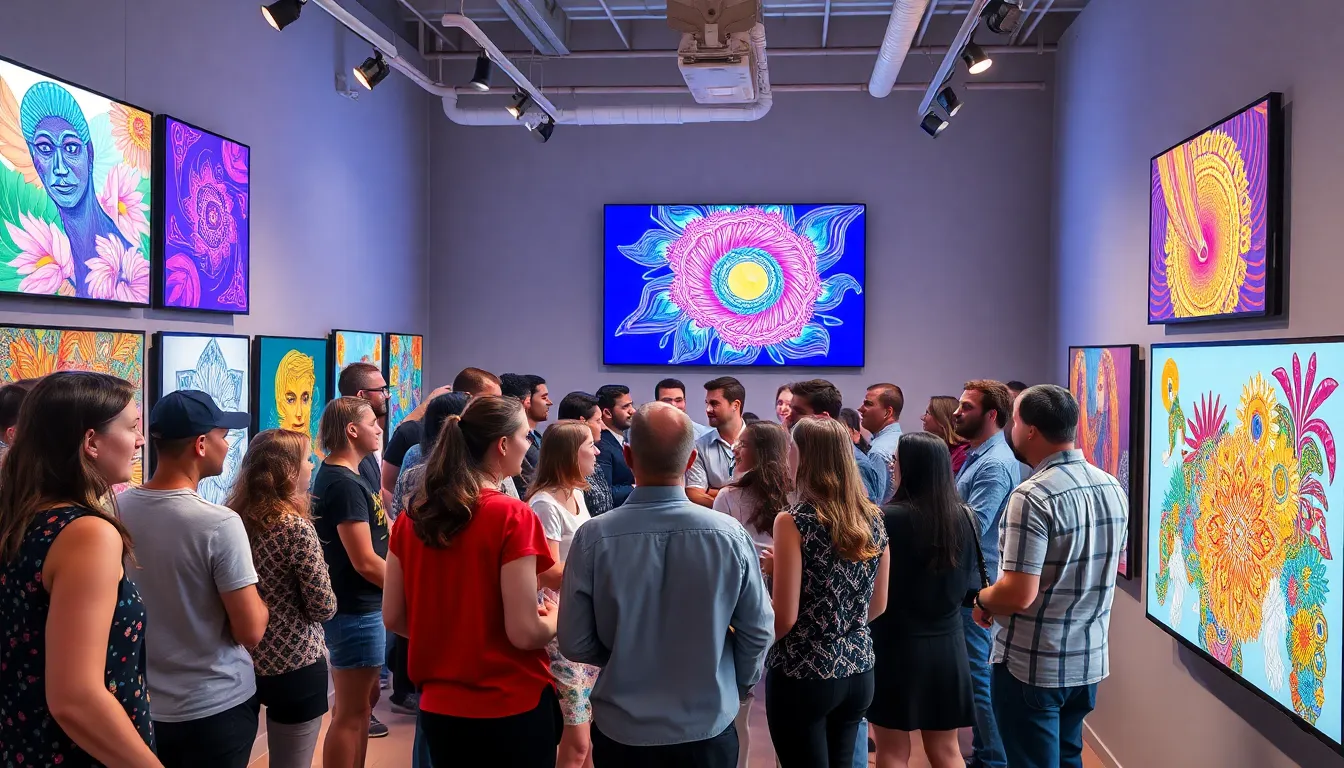In a world bursting with creativity, emerging artists are the fresh air that keeps the art scene alive and buzzing. These talented individuals are not just painting pretty pictures; they’re shaking up the status quo and challenging the way we see the world. From striking street art to innovative digital creations, they’re redefining what it means to be an artist today.
Table of Contents
ToggleOverview of Emerging Artists
Emerging artists play a crucial role in shaping contemporary art. Their innovative approaches and fresh perspectives challenge norms and inspire audiences worldwide.
Definition and Characteristics
Emerging artists refer to those who are in the early stages of their careers but demonstrate significant talent. They often explore diverse mediums, including painting, digital art, sculpture, and performance. Characteristics of these artists include originality, a unique style, and a willingness to experiment. Many embrace unconventional techniques, pushing boundaries and encouraging dialogue. As they develop their skills, they often gain recognition through exhibitions, social media, and collaborations.
Importance in the Art World
Emerging artists bring vitality to the art world, offering new narratives and viewpoints. Their work addresses current societal issues, making art more relevant to contemporary audiences. By creating innovative experiences, they attract a younger demographic who values authenticity. Opportunities for collaboration with established artists further enhance their impact in the community. Recognition of their contributions fosters a dynamic environment, enriching the overall art landscape. As they gain visibility, emerging artists challenge the status quo and inspire both audiences and fellow creators.
Notable Trends in Emerging Art

Emerging artists are increasingly shaping the art world through innovative phenomena. Several key trends illustrate their impact today.
Digital Art and Technology
Digital art’s rise showcases emerging artists’ adaptability. Many artists now use software, virtual reality, and online platforms to create immersive experiences. Technology not only streamlines the creative process but also fosters community among artists. Artists like Refik Anadol and Beeple utilize data and algorithmic techniques, pushing traditional boundaries. Virtual exhibitions and NFT markets expand visibility, allowing art to reach diverse audiences instantly. These advancements make art more accessible and relevant, emphasizing the evolving relationship between creators and technology.
Social and Political Influences
Social and political themes dominate the conversations emerging artists initiate. Many artists tackle issues such as climate change, racial justice, and gender equality in their work. Artists like Nicole Eisenman and Tatyana Fazlalizadeh speak out boldly, often depicting personal and collective narratives. This approach encourages audiences to engage in dialogue about pressing societal issues. Art as a form of protest or commentary has inspired younger generations to connect deeply with the creative process. Through their work, emerging artists make social activism an integral part of their artistic practice.
Platforms for Emerging Artists
Emerging artists benefit from various platforms that enhance their visibility and connect them with audiences. Social media and galleries serve as primary avenues for showcasing talent.
Social Media as a Launchpad
Emerging artists leverage social media to reach global audiences. Platforms like Instagram and TikTok allow artists to share their work instantly and cultivate follower engagement. They create visual narratives that showcase their unique styles, attracting potential collectors and collaborations. Hashtags and viral trends further amplify their reach, enabling artists to participate in digital conversations within the art community. Each post contributes to building an artistic brand, fostering connections with industry professionals and art enthusiasts alike.
Galleries and Exhibitions
Galleries and exhibitions provide crucial opportunities for emerging artists to present their work in professional settings. Participating in group shows often forms the first step into the art world, allowing artists to gain visibility among established peers. Some galleries specifically focus on emerging talent, offering solo shows that help build an artist’s portfolio. Local community events, art fairs, and pop-up exhibitions also create platforms for exposure. These venues allow direct interaction with potential buyers and art critics, helping artists secure valuable feedback and recognition.
Challenges Faced by Emerging Artists
Emerging artists encounter several challenges that can hinder their growth and visibility in the competitive art landscape.
Funding and Resources
Accessing adequate funding presents a significant hurdle for many emerging artists. Limited financial resources often restrict their ability to acquire materials, studio space, and technical support. Many rely on grants, crowdfunding, or support from local art organizations to sustain their practice. Notably, opportunities from established institutions can provide much-needed assistance. Artists frequently seek to establish networks to share resources and collaborate with peers, enhancing creative capabilities.
Recognition and Visibility
Achieving recognition remains a paramount challenge for emerging artists. While social media offers a platform for exposure, competition for attention is intense. Many artists struggle to break through the noise of countless creative voices. Engaging storytelling and consistent content sharing play pivotal roles in capturing audience interest. Participation in exhibitions and art fairs provides crucial visibility but is often inaccessible due to high costs or exclusivity. Thus, building relationships with galleries and art collectors becomes essential for gaining credibility and expanding reach.
Emerging artists are reshaping the art world with their innovative approaches and fresh perspectives. They not only challenge conventions but also address critical societal issues through their work. By leveraging technology and social media, these artists are gaining visibility and connecting with a broader audience.
Despite the challenges they face in funding and recognition, their resilience and creativity shine through. The art community must continue to support these talents, ensuring their voices are heard and their contributions valued. As they push boundaries and inspire dialogue, emerging artists play a crucial role in the evolution of contemporary art.
